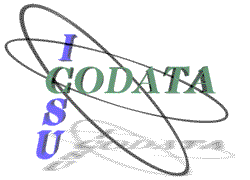|
ABCD Schema - Task
Group on |
 |
A rough hierarchical list of data items which should be considered in the XML schema to be developed.
These are notes from the discussion, this is NOT EVEN A DRAFT standard document yet!
Conventions | Hierarchy | Full dataset | Component dataset | Unit | Gathering event | Site | Identification | Notes
Items marked [e*] can occur 0 to many times, [e+] marks 1 to many, [e] exactly 1, [e?] 0 or 1.
One to several "Unit dataset" (specimens, observation records, samples, etc.) are nested within "Component Datasets", one to several of which can be nested into a "Full returned dataset":
Full returned dataset [e] Version of Standard Supplier [e] Supplier text [e?] Supplier code [e?] Name URL Address [e] Line1 Line2 Line3 Line4 Town Country Dataset annotation Component dataset [e*]
Component dataset [e*] Dataset or Collection or subcollection name [e] Originator [e?] Originator text Originator code [e?] Name URL Address [e] Line1 Line2 Line3 Line4 Town Country Contact [e*] Name Tel Fax Email Owner/Custodian [e] Owner text Owner code [e?] Name URL Address [e] Line1 Line2 Line3 Line4 Town Country IPR etc. [e?] Dataset acknowledgements Disclaimer Usage restrictions Purpose Logo No of unit records in the result set [e?] No of unit records in the queried database [e?] Date of extraction [e?] Database version [e?] Unit dataset [e+]
Unit dataset Unit record unique ID Unit physical location / custodian institution Unit text [?] Unit identifier or code [*] Date/time of last modification of Unit record [?] Originator (depositor, other bot. garden source, Originating Institution) IPR ?? Surrogate ?? Unit association/assemblage/ .. Substrate/host Owner Named collection Unit further descriptive information (morphology, etc.) No. of ind. in the collection exact / at least / approx. Abundance / Density at collection site Qualifier , Method Unit availability Unit condition (broken etc.) Unit "nature" or preservation mode virtual vs. object preservation mode part creation process Domain-specific unit data Zoology Age Phase Sex ZOOPOSS Botany POSS (introduction or naturalization status) Mycology Botanical gardens hardiness Culture collections growth conditions culture medium anaerobic/aerobic temperature applications literature references hazard ?? Process Type Type status Type qualifier Basionym Gathering Event [e?] Collection site [e?] Identification [n]
Gathering Event [e?] Project name [e*] see BioCISE model p. 521 Gathering Agent (Person, etc.) [e?] Main collector(s) [e?] Additional collector(s) [e*] Gathering code (referring to [main] agent) [e?] Date/Time [e?] NOTE: What if unknown?? Calendar (Gregorian, Julian, Muslim, Hebrew etc.) Date text [e?] Modifier [e?] Begin [e?] Year [e?] Month [e?] Day [e?] End [e?] Year [e?] Month [e?] Day [e?] Gathering Site (Geography group HISPID) [e+]
Gathering Site (Geography group HISPID) [e?] Country [e?] Country name (ISO) [e?] Language [e*] ISO 2-letter [e?] ISO 3-letter [e?] Named area [e?] Named area [e*] area class (dept., Prov. ) [e?] area name [e+] Area detail [e?] Nearest named place [e?] Language [e*] Shape Shape coordinate system Shape coordinates Footprint URL Coordinates (Lat/Long) [e?] Decimal degrees [e?] Long [e?] Lat [e?] DMS Longitude Degrees Min Sec N/S Latitude Degrees Min Sec N/S Method [see HISPID] Datum ISOAccuracy Accuracy statement Grid-coordinates Grid cell system Grid cell code Qualifier Method UTM UTM Zone UTMEW UTMNS Method Altitude Value Units Accuracy Method Depth/Height (see BioCISE p. 533, tbl. 7) Value Unit Accuracy Method Habitat/Ecology Geo-ecological classification (see BioCISE p.527)???? Category Value Bibliographical reference Geomorphology Substrate Synecology Stratigraphy Classification system Stratum Notes
Identification [e+] Preferred [e] Identification event [e?] Identifier (agent) Identification according to (LitRef) Taxon identification qualifier Verification level (HISPID vlev) Date vdate Notes Identification found in (LitRef) Identification type [see BioCISE p 556] Name addendum Taxon identified [e] Code Taxon text Higher taxon [e*] With recommendation what to use for different groups. Genus or monomial first epithet second epithet Rank Nomenclatural authority citation Basionym author Botanical (new) combination author ex author Year (zool. & bact.) Page number (bact.) Plants or animals Hybrid/Graft marker Hybrid/Graft marker rank Parent 1 Parent 2 Common name Name Language Animals Breed or race Higher plants Cultivar group Cultivar Aggr. marker Unnamed taxon phrase name part Fungi Life stage [e?] added from comment by Paul Kirk Sexual stage added from comment by Paul Kirk ? Anamorph / Teleomorph ? Lichen algal symbiont Lichen - marker Lichen morphotype symbiont name, added from comment by Paul Kirk Bacteriological epithets strain pathovar phagovar biovar ecovar Virus names Viral name phrase Synonym (e.g. abbreviation)
Shape and UTM were added following comments from John Wieczorek.
We should consider if age, stage, and sex are really data belonging to the unit, or if these should go under identification.
Working Group Homepage | TDWG Accessions Subgroup Homepage | CODATA | TDWG
Page hosted by the Department
of Biodiversity Informatics and Laboratories of the Botanic
Garden and Botanical Museum Berlin-Dahlem. DISCLAIMER
Page editor: Walter Berendsohn (w.berendsohn [at] bgbm.org).
This page last edited on 06.03.2005